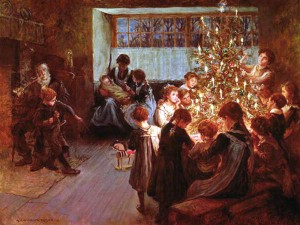Dickens’ Christmas Mystery
For fun Christmas reading this season, I highly recommend John Grisham’s “Skipping Christmas,” or Maeve Binchy’s “This Year It Will Be Different.” For a more thought-provoking read, however, I suggest Charles Dickens’ short story, “A Christmas Tree.”
I have often contended that Dickens is at his greatest when he is brief. Although I have enjoyed some of his long tomes, my favorites are of moderate length: “A Tale of Two Cities,” “Great Expectations,” and “Hard Times.” His most famous work is, of course, the shorter “A Christmas Carol.” While “A Christmas Tree” runs only 20 pages, I have contemplated it repeatedly since I first read it many years ago.
On goodreads.com, this short story earns a rating of only 2.7 on a five point scale, reflecting the reality that the story is more thought-provoking, rather than enjoyable. But, because I wish you and yours a Blessed Christmas, rather than just a “Merry Christmas,” I encourage you to read this story and to consider what meaning a Christmas tree might have for us.
“A Christmas Tree” was published in 1850 at a time when the Christmas tree tradition was strong in Germany, but not yet the fad that it has become in the 21st century. Dickens was showing some English readers a first look at this Christmas tradition.
He begins by describing the glittery bright ornaments of a particular tree: dolls, clocks, figurines, instruments, jewels, weapons, fruit, candy, and masks. He then reminds his reader of the spiritual images on the tree, including angels, shepherds, and stars. He also tells us that the Christmas tree points us to the Christian cross.
But in a strange twist (and one that the reviewers on goodreads.com fail to understand), he then switches to ghost stories. His children on Christmas Eve have difficulty sleeping, and they dream of haunted and mysterious stories of drama and death that defy our human imagination, stories that force us to consider diverse supernatural mysteries.
Lastly, as the story draws to a close, Dickens’ eyes move to the top of the tree, and he describes the most incomprehensible mystery of all: the star.
The bright star that sits atop the tree reminds us of the natal star that rested above the stable. The mystery of the incarnation, God the Son, taking on human essence, is more mysterious than any ghost story Dickens can imagine. Dickens’ tree turns the child’s heart to the figure of Christ, and encourages trust and confidence.
Many Christians complain about the secularization of Christmas, and rightly so. Yet, it is worth considering the Christmas tree, and allowing it to point us to the mystery of the ages. From the closing words of the story, “This, in commemoration of the law of love and kindness, mercy and compassion. This, in remembrance of Me!”
I suggest, after you have put up your decorations and prepared your mulled cider that you read Dickens’ “A Christmas Tree,” and allow this sacred writing to draw your heart and mind to remember and contemplate the mystery of all mysteries, the mystery of the ages.
[Editor’s note: the text of the story is at Classic Reader.]


